1
'Oumuamua
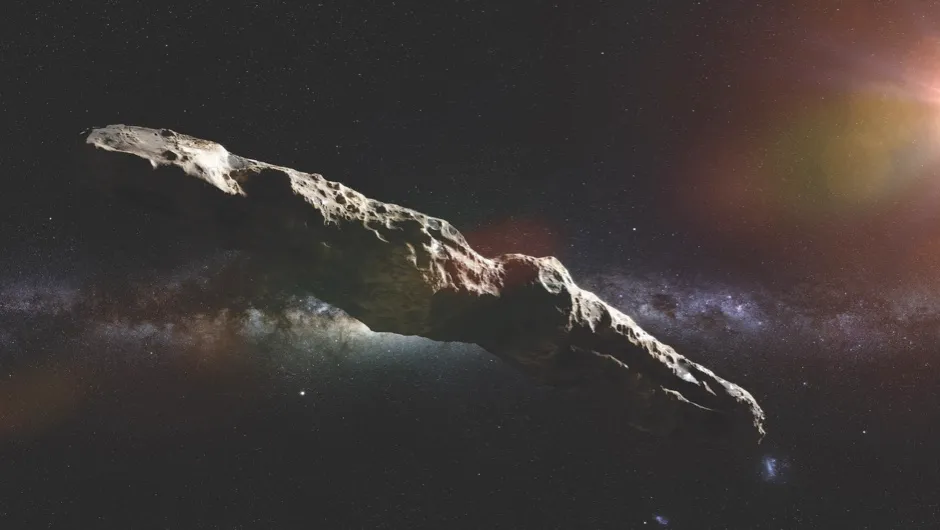
The pages of sci-fi books are full of alien interlopers secretly entering the Solar System to snoop on humanity as we emerge as a technologically capable race. So it’s no surprise that excitement started to build when, on 19 October 2017, the astronomer Dr Robert Weryk spotted an object whizzing through the Solar System while using the Pan-STARRS telescope at Haleakalā Observatory, Hawaii.
Dubbed 'Oumuamua (after the Hawaiian for ‘scout’), this object is extremely elongated, possibly up to a kilometre long but not more than 167 metres wide, making it look like a space cucumber. It’s travelling so fast that there’s no way it can be gravitationally bound by the Sun. The only conclusion is it’s an interloper that formed outside our Solar System and subsequently trekked all the way here.
Estimates suggest it entered the Solar System in the Victorian era, but astronomers don’t know exactly how long it wandered space alone before it got here. In August 2018, a study using data from the European Space Agency’s Gaia telescope identified four stars that it would have passed close to in the last one to seven million years. Perhaps one of these was its home star.
So what is 'Oumuamua? At first, astronomers reckoned it was an asteroid, but a closer look at its motion threw up something strange: the Sun’s gravity was not the only thing affecting its trajectory through space. This prompted some researchers, including Prof Avi Loeb at Harvard University, to suggest it could be an alien space probe. If it had a solar sail attached, pressure from the solar wind could be helping to blow it off-course.
But this idea has received a backlash from most quarters, and the object is more likely to be something entirely natural. “Most of the evidence points towards a comet,” says Dr Colin Snodgrass, an astronomer at the Open University. Little jets of gas, caused when the comet’s ice is warmed by the Sun, could be nudging it off its natural gravitational course.
“It has some unusual properties compared with comets from our Solar System, though,” adds Snodgrass. “We are still trying to figure out what causes these.” Typically, comets reflect about 4 per cent of the light that falls on them. 'Oumuamua is more than twice as reflective. Unfortunately, our chance for more observations is now over. 'Oumuamua has fled into the outer Solar System, journeying past Jupiter on a trajectory that will eventually see it leave our neighbourhood altogether. It’s already too faint to see. Yet the controversy and ideas around this mysterious object continue to confound astronomers.
2
The Red Rectangle Nebula
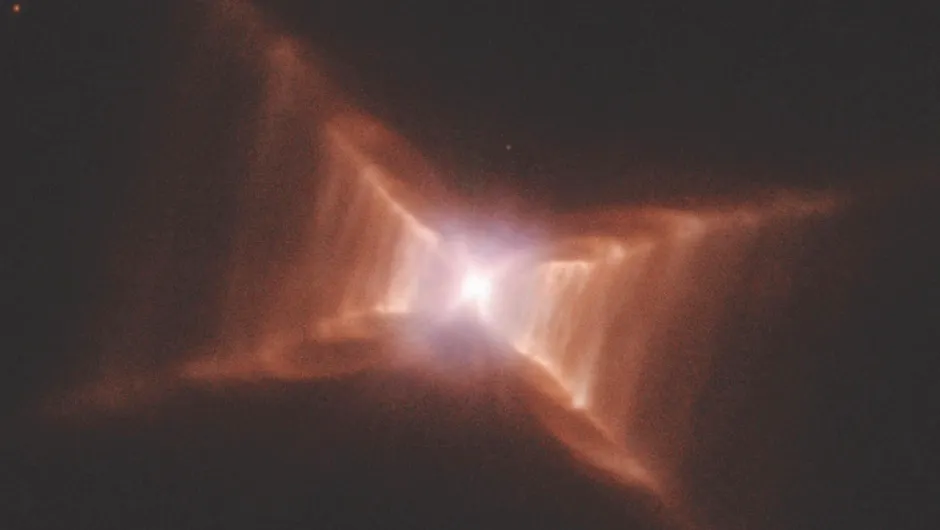
Throughout the Galaxy, gas clouds take on weird and wonderful forms, but one nebula in particular is baffling astronomers with its oddly geometric shape. Located in the constellation of Monoceros (The Unicorn), the Red Rectangle Nebula sits 2,300 light-years away.
Its distinctive shape could be due to the fact that two stars sit at its heart. If shock waves from both stars hit a dusty ring surrounding the pair, they could create two cones of bright dust. Seen together, these two cones look like a square.
To add to the mystery, the nebula also exhibits a rare phenomenon called ‘extended red emission’, where its dust glows eerily red. It isn’t known exactly what causes this, but some researchers argue that it’s due to intense ultraviolet light from the stars interacting with carbon-rich molecules in the dust.
3
Planet Nine
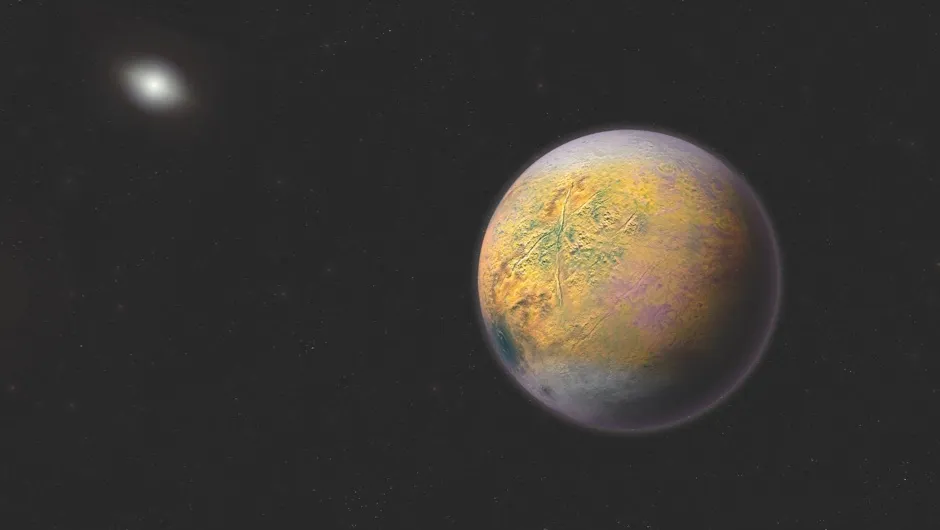
Could an enormous world be lurking in our midst? Astronomers are increasingly certain that there is a ninth planet orbiting the Sun, far out beyond Neptune – a so-called ‘Planet Nine’. It wouldn’t be the first time the roll call of the Sun’s orbiting worlds has been tweaked. When Ceres, the largest asteroid in the Solar System, was discovered in 1801, it was initially classified as a planet, but later downgraded. Pluto, too, was admitted to the planet club upon its discovery in 1930, only to be asked to leave in 2006 and relegated to dwarf planet status.
The first clues that there is yet another member of the Sun’s planetary fraternity came in 2014 when American astronomer Dr Scott Sheppard found a small dwarf planet candidate called 2012 VP113, orbiting an average of 250 times further from the Sun than the Earth. Its elongated orbit, which is significantly tilted relative to that of the planets, immediately stood out. “Nothing is currently known in the Solar System that could create 2012 VP113’s orbit,” says Sheppard.
While a few unusually aligned objects could be dismissed as an unlikely coincidence, now a total of 10 have been discovered, largely thanks to work by astronomers Dr Mike Brown and Dr Konstantin Batygin at the California Institute of Technology. With all of these objects sharing similar orbital properties, the chances of their alignment being a fluke drops to just 0.0001 per cent. The leading explanation is that there is an otherwise unseen planet herding these objects with its gravity.
Sheppard was 60 per cent sure a ninth planet existed back when he found 2012 VP113. Now he say he’s 85 per cent certain. Yet for the planet to be acting in this way, it would have to be 10 times more massive than the Earth, take at least 10,000 years to orbit the Sun, and sit over 200 times further out than our planet.
This enormous distance makes hunting it down and photographing it tricky. For us to see Planet Nine, light has to trek all the way out there from the Sun and almost all the way back again, fading all the while. But astronomers have been able to narrow the search using several clever shortcuts. For example, data from the Cassini mission to Saturn was used to rule out parts of the outer Solar System. If Planet Nine was in those areas, then the probe would have picked up small gravitational discrepancies.
There was a small setback in September 2018 when new research showed that another technique for ruling out parts of the sky wasn’t feasible. But the hunt goes on. “So far we have covered about 30 per cent of the prime area the planet could be in,” says Sheppard. It’ll take about another four years to cover the rest.
4
Galaxy X

Astronomers are good at finding new objects by spotting their effects on their more conspicuous neighbours. Neptune was discovered thanks to its influence on Uranus; black holes show themselves by the stars they bind into orbits around them. So when astronomers saw odd ripples in the disc of the Milky Way in 2009, thoughts naturally turned to some unseen disrupter. In 2015 they found the culprit: a dark, dwarf galaxy orbiting the Milky Way, subtly altering the motion of our Galaxy with its gravitational pull.
We can only see this galaxy thanks to four bright stars that shine out of the gloom. Otherwise, the galaxy lurks in the shadows. To be this hard-to-see, ‘Galaxy X’ must be largely made of dark matter – the invisible glue that binds galaxies together. In normal galaxies, this dark matter is peppered with visible stars and hot gas strung out like Christmas lights. In Galaxy X, it’s as if all the lights have gone out.
In 2016, a Milky Way-sized galaxy known as Dragonfly 44 was found to be made of 99.99 per cent dark matter. It joined Segue 1, a dwarf galaxy discovered in 2006 that subsequent observations showed contains 1,000 times more dark matter than ordinary matter. That compares to a ratio of around 20 to 1 in our own Milky Way. Little is known of the origins of these ghostly galaxies, but studying them may help us to understand what dark matter itself is made of.
5
Elst-Pizarro
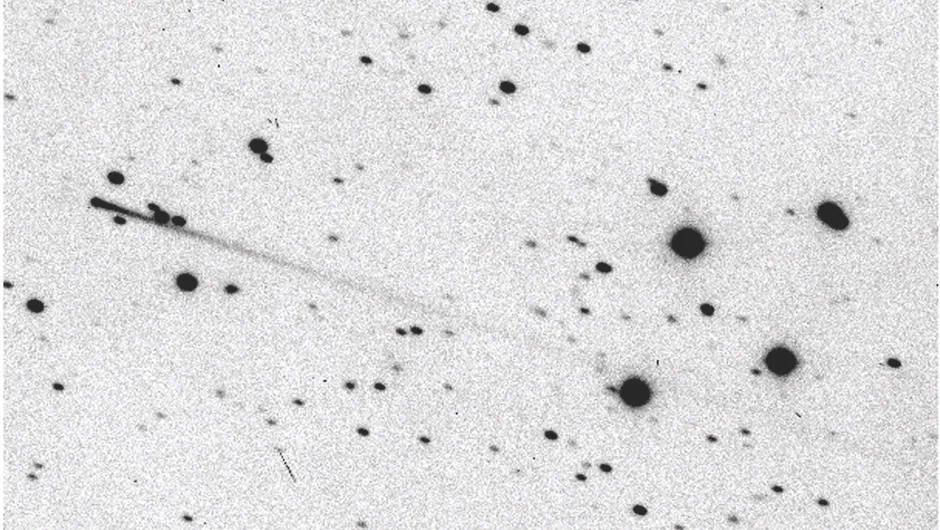
Normally it’s easy to tell asteroids and comets apart. Asteroids are solid lumps of rock and metal, capable of careering into planets and killing dinosaurs. You typically find them in the inner Solar System, particularly in the asteroid belt between Mars and Jupiter. Comets, on the other hand, are icy bodies that form on the outskirts of the Solar System. On their rare forays towards the Sun, their frozen bodies react with solar radiation to create spectacular tails.
An object known as Elst-Pizarro, however, refuses to be so neatly pigeon-holed. When it was first discovered in 1979, its orbit in the asteroid belt led to it being classified as an asteroid. Yet when it was examined more closely in 1996, it showed itself to have a tail – like a comet.
Astronomers first thought that the tail was debris from a collision, rather than something bestowed by the Sun’s heat. But the tail’s brightness and structure changed over time – pointing to an ongoing process, rather than a one-off event. The object’s rapid rotation – completing a full spin in just 3.5 hours – also said comet. One possibility, however, is that a collision has exposed some subsurface ice on the body which is slowly being lost to space. In this case, Elst-Pizarro would be an asteroid masquerading as a comet – until it has shed all of its exposed ice and gone back to being a standard asteroid again.
Arguments still rage between astronomers. To settle them once and for all, space scientists had hoped to launch the Castalia spacecraft for a closer look in 2028. However, the mission failed to get the green light in the European Space Agency's 2016 round of funding. So the disagreements continue, for now at least.
6
Tabby's Star
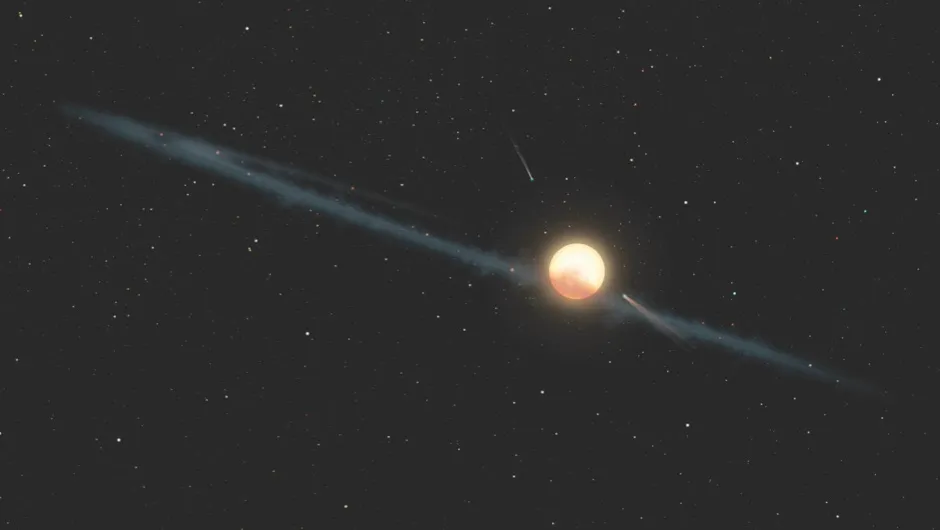
'Oumuamua isn’t the only object that has got people talking about alien technology. Extraterrestrials have also been implicated in the mysterious dimming of Tabby’s Star. Located nearly 1,500 light-years from Earth in the constellation Cygnus, it is named after the astronomer Tabetha Boyajian. She was the lead author of a 2015 study which showed that the star occasionally rapidly drops in brightness by a whopping 22 per cent. The star’s overall brightness has also been seen to fade more slowly over several decades.
The short-term variation was picked up by the Kepler space telescope, whose job it was to find alien planets by analysing the light of distant stars, looking for dips in their starlight as a planet passed in front of them. However, unlike the dimming of Tabby’s Star, the dimming caused by planets is evenly spaced, as it happens each time the alien world completes an orbit, and is also relatively small – normally under 1 per cent. “Tabby’s Star just keeps getting weirder and weirder,” says astrophysicist Dr Eva Bodman at Arizona State University.
So what else could be dimming the star? One idea is that a swarm of comets is plunging into the inner regions of the star’s solar system, producing huge amounts of dust in the process. It’s this unevenly distributed dust that might be preventing some of the star’s light from reaching us, causing the rapid brightness changes. But that wouldn’t explain the other pattern of long-term dimming over decades – comet dust dissipates in just a few months.
This has led others to claim that the culprit might be megastructures built by advanced aliens to harvest the star’s energy. If this technology was unevenly distributed around the star, it would cause sporadic dips as it orbited, and it would also block more light over time as the project was constructed (explaining the longer-term fading).
This is a notion that Bodman rejects. “It’s a fun idea, but it’s been firmly eliminated,” she says. She points to observations of the rapid dimming that show more light is blocked at the blue end of the spectrum than the red end. Blue light has a shorter wavelength, so this is exactly what you’d expect if it was being scattered by small dust grains (light is scattered most when it interacts with objects similar in size to its wavelength).
However, analysis of the light spectrum linked to the longer-term dimming implicates larger dust grains. So we might, therefore, be looking at a complex cloud of different-sized dust grains blocking varying amounts of light as its orientation changes over time.
Yet the source of all that dust still remains a mystery. The long-term variations of Tabby’s Star can be traced back to at least the 1890s. Dust shouldn’t persist over such timescales, so it seems that some process is replenishing the dust as it’s transported away by the outward pressure of the star’s light. “There’s no obvious explanation for what’s going on,” says Bodman.
7
FRB 121102

Of all the things leaving astronomers scratching their heads, fast radio bursts (FRBs) are particularly vexing. As their name suggests, they are sudden, rapid chirps of radio waves, often lasting mere milliseconds. The first one was picked up by our radio telescopes in 2007, and we’ve been scrambling to try and explain them ever since.
These FRBs appear to be coming from outside the Milky Way, often hundreds of millions of light-years away. To be seen from such a distance, they must release as much energy in a fraction of a second as the Sun does in 80 years. Explanations range from colliding black holes to signals from extraterrestrial civilisations.
Yet before astronomers had managed to figure them out, the Universe threw us another curveball. A burst known as FRB 121102, emanating from a small galaxy three billion light-years away, was seen to repeat. On just one day in August 2017 it repeated a staggering 93 times, ruling out a single event as its cause – whatever triggered the burst had to be ongoing. So maybe FRBs are caused by rapidly rotating neutron stars, or material continuously falling into black holes.
Of course, FRB 121102 could be a red herring: there could be two separate causes of repeating and non-repeating FRBs. In October 2018, a new haul of 19 non-repeating FRBs was announced, including the closest and the brightest FRBs detected to date. Studying their properties should help us to pin down their home galaxies – and ultimately, we hope, the cataclysmic processes that are causing them.
8
Hoag's Object

We live in a flat, spiral galaxy known as the Milky Way. Other galaxies, called ellipticals, are shaped like rugby balls. Yet Hoag’s Object appears to be neither. It has an older yellow core, surrounded by an outer ring of young blue stars. But in the middle: nothing. It’s like something has swept away the spirals. There’s no other galaxy in the Universe quite like it, and astronomers are stumped as to how it formed.
It was spotted in 1950 by American astronomer Arthur Hoag, and perhaps the most feasible explanation offered so far is that, two to three billion years ago, a small galaxy sped through the larger disc-shaped galaxy, creating this unusual structure. But there’s no sign of any galaxies nearby that might have served as the ‘bullet’, and such a collision would have sped up the core of Hoag’s Object – whereas observations show that it spins slowly. To add to the conundrum, if you look closely at roughly the one o’clock position, there’s a smaller version of the galaxy hidden within itself.
9
The Bermuda Triangle of space
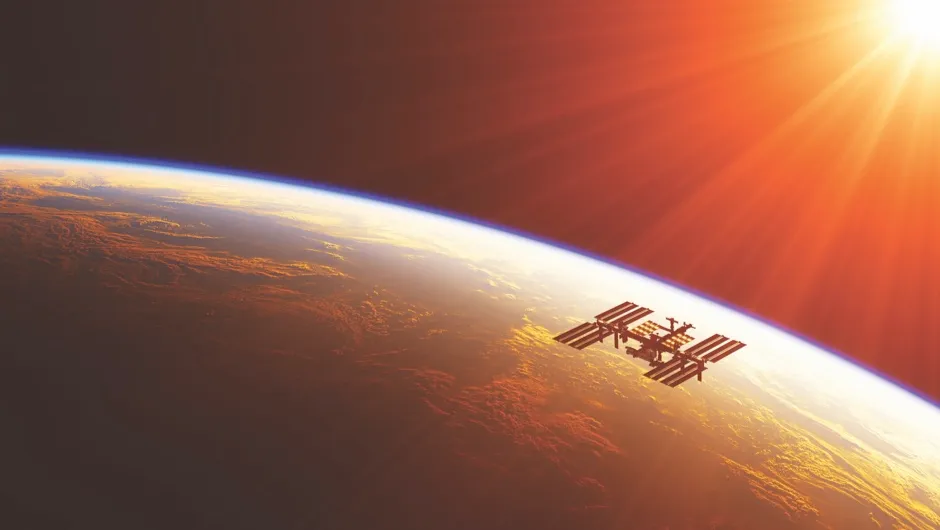
Imagine drifting off to sleep when, still with your eyes closed, you’re suddenly startled by an intense flash of light. This is exactly what some astronauts have reported when passing through the South Atlantic Anomaly (SAA) – a region of the Earth’s magnetic field also known as space’s Bermuda Triangle. Scientists believe it is linked to the Van Allen radiation belts – two rings of charged particles trapped in our planet’s magnetic grasp.
Our magnetic field is not perfectly aligned to the rotation axis of the Earth, which means these Van Allen belts are tilted. This leads to an area 200km above the South Atlantic where these radiation belts come closest to the Earth’s surface. When the International Space Station passes through this area, computers can stop working, and astronauts experience cosmic flashes – probably due to the radiation stimulating their retinas. Meanwhile, the Hubble space telescope is unable to take observations. Further study of the SAA will be crucial for the future of commercial space travel.
This is an extract from issue 331 of BBC Focus magazine.
Subscribe and get the full article delivered to your door, or download the BBC Focus app to read it on your smartphone or tablet. Find out more
You can listen to our full interview with Colin Stuart in the Science Focus Podcast below. Make sure you subscribe and rate it wherever you get your podcasts from.
Follow Science Focus onTwitter,Facebook, Instagramand Flipboard
